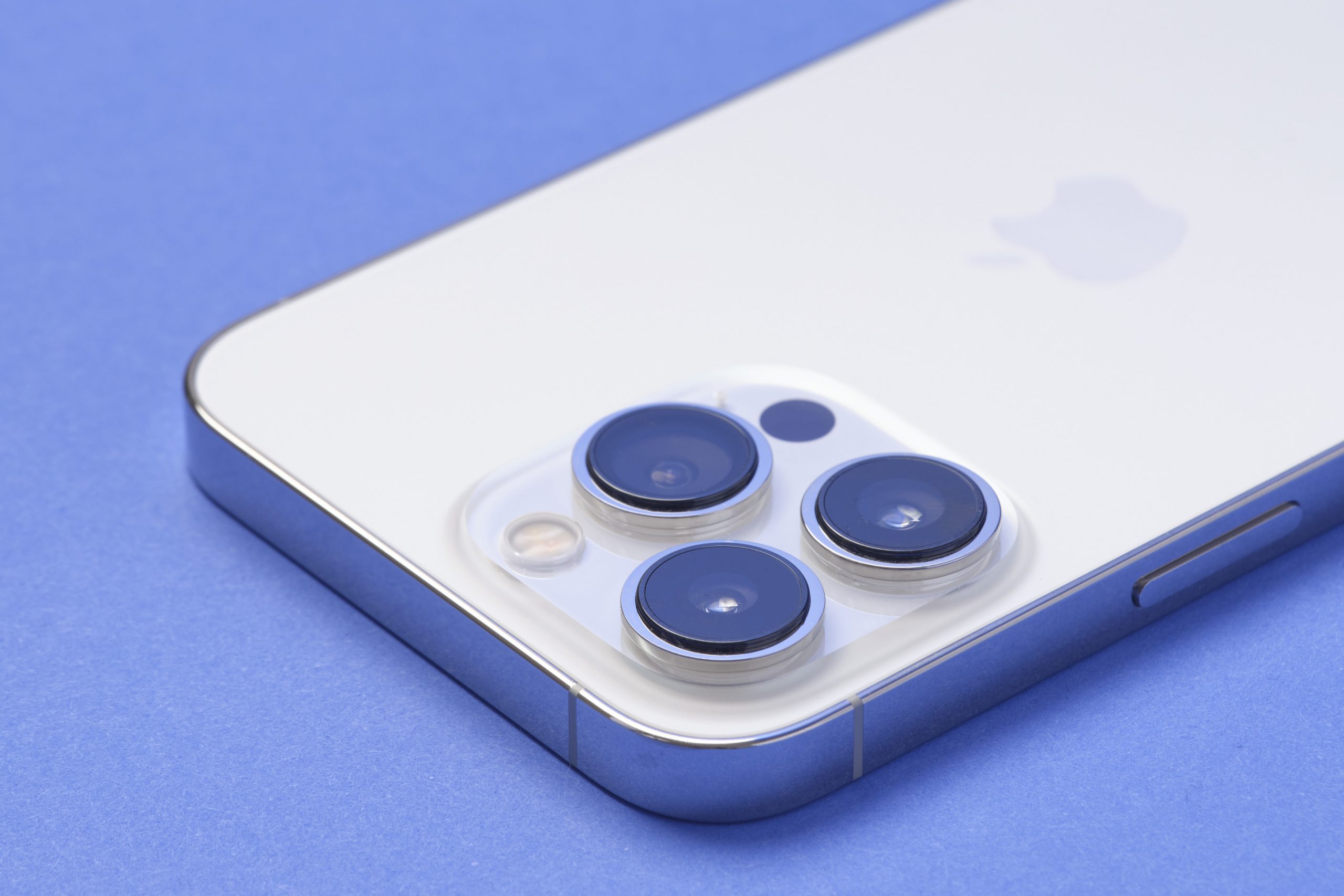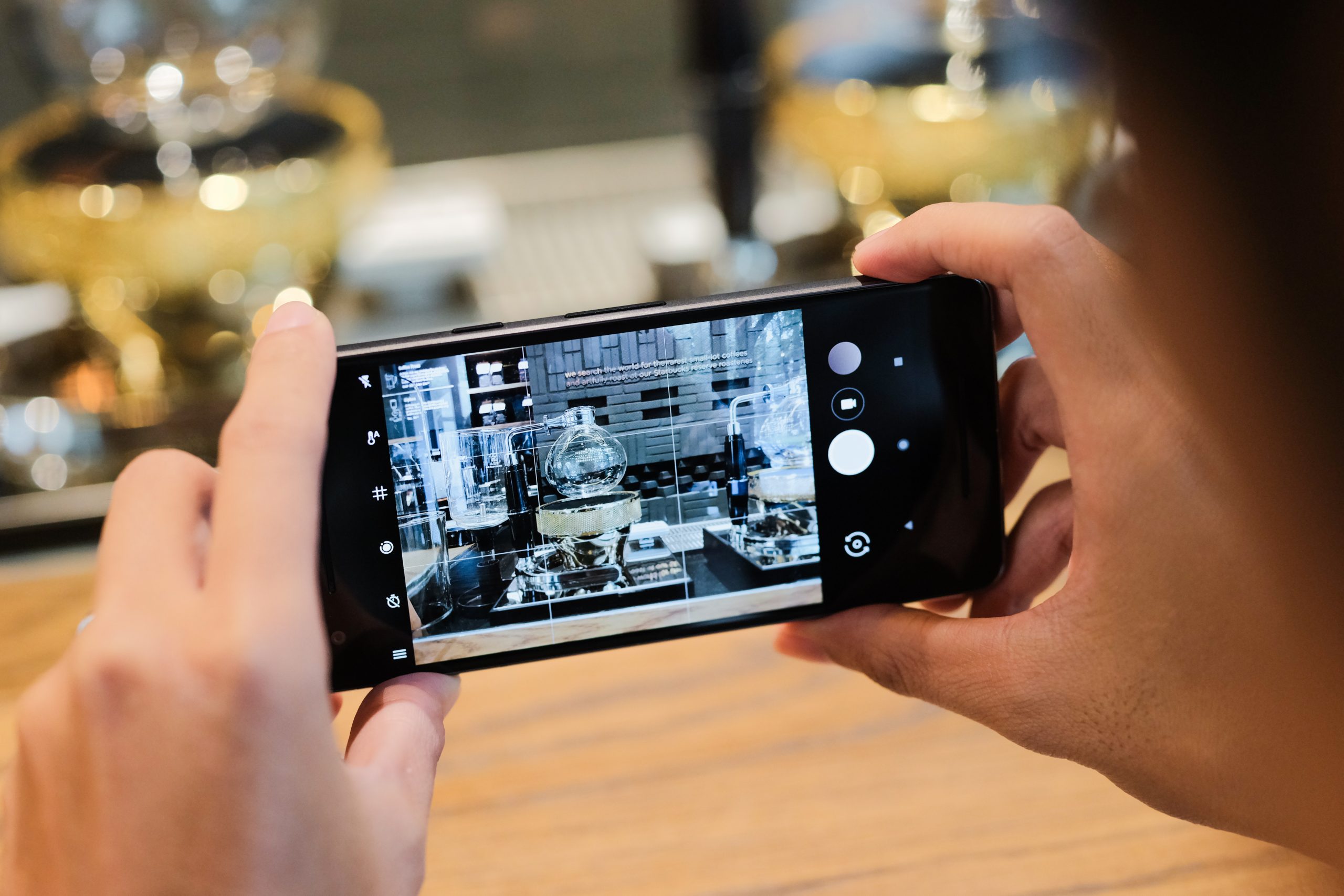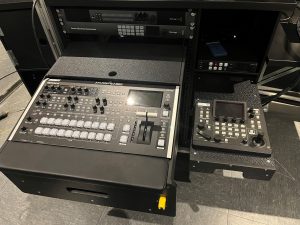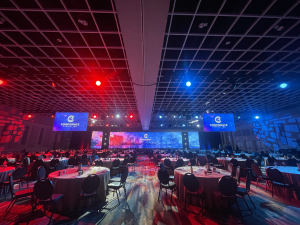- Thanks to our phones, a video camera is nearly always within our reach for livestreaming or recording.
- Learning core concepts like focus, zoom, and exposure can help create professional-quality video content.
- With time and practice, you can get all the cameras on a shoot to have a cohesive look.
Here’s a trick question: What’s the best camera in the world? The one you have. There was a time not long ago when video cameras were rare, oversized, and bulky. These days, thanks to our phones, a video camera is nearly always within our reach. Learn how to take the camera on your mobile device to the next level and maximize it for livestreaming and other videos. Plus, explore core concepts to create professional-quality video content.
Focus
Focus is an art in and of itself. There are many ways to approach this crucial element of visual storytelling. The various types of autofocus available on mobile devices work well for most scenarios. Still, you may crave a more cinematic effect. Some examples are playing with the depth of field to blur the background, focusing more on your subject or allowing for deeper focus, and keeping everything in the shot in sharp view.
A simple way to experiment with more artistic techniques is to unlock your phone’s manual focus setting. Manual focus requires more skill and patience than autofocus, making it the choice of many professional videographers.

Zoom
Zoom is an easy concept to understand. Zoom in if you want to see further or closer into a shot. Conversely, zoom out for more of a shot or a wider view. Mobile devices all have this powerful feature. However, your ability to zoom depends on the mobile device you own. Newer phones with more advanced lenses allow for higher-quality zooming. Older phones zoom in digitally, which blows up the image. As a result, this can create artifacts, resulting in annoying square pixels or a lower resolution image.
Ultimately, nothing beats the old-school approach: zoom with your feet. Video is about movement and getting to places others can’t, so move closer if you need a tighter shot of your subject. Approach the thing you want to focus on and fill the frame with better-composed images that are genuinely HD.

Exposure
The goal of exposure is to retain all the information in a scene—from the darkest to the lightest point. The limitations of a camera can only stay within the range of exposure. As a result, you must choose to expose the darkest or lightest sections of a shot. In addition, the only way to supplement either is to add additional light to the darker areas. Doing so brings everything in the image within the range of exposure.
When shooting with a mobile device, consider lighting and exposure. Automatic mode can keep you from overexposing a video. Your mobile device will find what it thinks is the subject, or what you tell it is the subject, and expose the image to that.
The goal of exposure is to retain all the information in a scene—from the darkest to the lightest point.
Lighting Tricks
When creating proper exposure for your mobile device, you don’t have to light your livestream or video like a Hollywood film. Have the focus of your shot covered in light. If you are filming inside, ensure your subject is facing the windows or sitting next to the window to use natural sunlight. You can also try lamps to light your subject better. Make sure your subject is not between the camera and the window. If you do so, your subject will be a silhouette. This effect is called backlighting.
Shooting outside is often more difficult than inside because there is no simple way to tame the sun. Your subject should face the sun outdoors, so the side you want gets lit. Once again, the goal is not to create backlighting unless that is the desired effect. If you want to get creative and have the right environment, try this trick: place your subject next to a light-colored wall and use the sunlight to bounce light on them. This approach will soften the light by not having the sun directly on the subject.

White Balance
In general, the color temperature within a camera does not match the light source’s color temperature within a scene and requires balancing. We measure color temperature in Kelvin. 3600 Kelvin, considered tungsten, is equivalent to a warm light bulb, while 5500 is equivalent to daylight. Generally, anything above 5500 Kelvin will be very cool in color, like a fluorescent bulb. Anything below 3600 looks like a match light.
White balance is the color balance on the sensor inside the camera in relation to the prevalent light in a scene. If a livestream or pre-recorded video appears too yellow or too blue, the shot is not balanced. Changing your lighting temperature might slightly affect your exposure. Most mobile devices allow users to set temperature and tint manually.
White balance is the color balance on the sensor inside the camera in relation to the prevalent light in a scene.

Whole Lotta Lenses
With all the advances in mobile devices, it’s no surprise that phones now include multiple cameras. Some of these are perfect for shooting video, while others are slightly less than optimal but can still be helpful. When using multiple devices, to ensure the white balance is matched across different cameras with different sensors, start with your best camera as your guide and match the other sources. Let’s look at some of the basics of iPhone and Android cameras.
iPhone
The iPhone 13 Pro allows the use of up to three different lenses—essentially different focal lengths—ranging from telephoto to ultra-wide. Of these, the 1x lens (wide) with 26mm focal length is the default setting and is best suited for video. The 0.5x lens (Ultra Wide) has a roughly 13mm focal length.
When using multiple devices, to ensure the white balance is matched across different cameras with different sensors, start with your best camera as your guide and match the other sources.

For reference, the human eye is roughly around 50mm. Anything above 50mm is zooming in, and anything under 50mm looks wider. Generally, anything below 18mm can be considered a fisheye lens. The O.5 lens has a great deal of fisheye which can be employed creatively for unique effects.
Two valuable features of the latest iPhone cameras are image stabilization and Dual Pixel Autofocus. Image stabilization allows you to move the camera within reason while keeping the image relatively still. New iPhones like the 12 and 13 use optical and sensor-shift stabilization to give users more control while shooting.
Android
Android phones boast a wider variety of camera lenses and tools, including several with optical zoom, as opposed to digital magnification. The Google Pixel 6 Pro has a 4x optical zoom which provides some leverage when shooting from a distance. In general, the rules for Android and iPhones are the same. Keep the shot simple, light it well, zoom with your feet, and maintain a single focus.

Multi-Camera Shoots
Mobile cameras are now standard in multi-camera livestreams and video shoots. There are several factors to keep in mind if your content creation is moving in that direction. Make sure all cameras in a shoot have the same settings: white balance, zoom, etc.
Once again, poor white balance and exposure are the most common mistakes of multi-camera mobile device shooting. Video shot at the same time and place looks very different when the color balance is off or exposed improperly. As discussed above, most smartphones allow users to set temperature and tint manually. With time and practice, you can get all the cameras on a shoot to have the same temperature, creating a cohesive look.
With time and practice, you can get all the cameras on a shoot to have the same temperature, creating a cohesive look.

Settings
Ultimately, the best way to get the most out of your mobile device is to spend some time in the settings menu. While no phones are alike, there are plenty of parameters with which to experiment. Play with the different settings and create the look you want. Over time, working with the settings will help you develop your visual style.
Practice Your Craft
To learn what your smartphone cameras can do, get out there and experiment in a variety of scenarios:
- Livestream a concert at a local venue.
- Create a YouTube talk show.
- Recap a family event.
Find ways to get out there and push your creative limits. While you do, dig deep into those smartphone camera settings in your device to get the most out of it.




